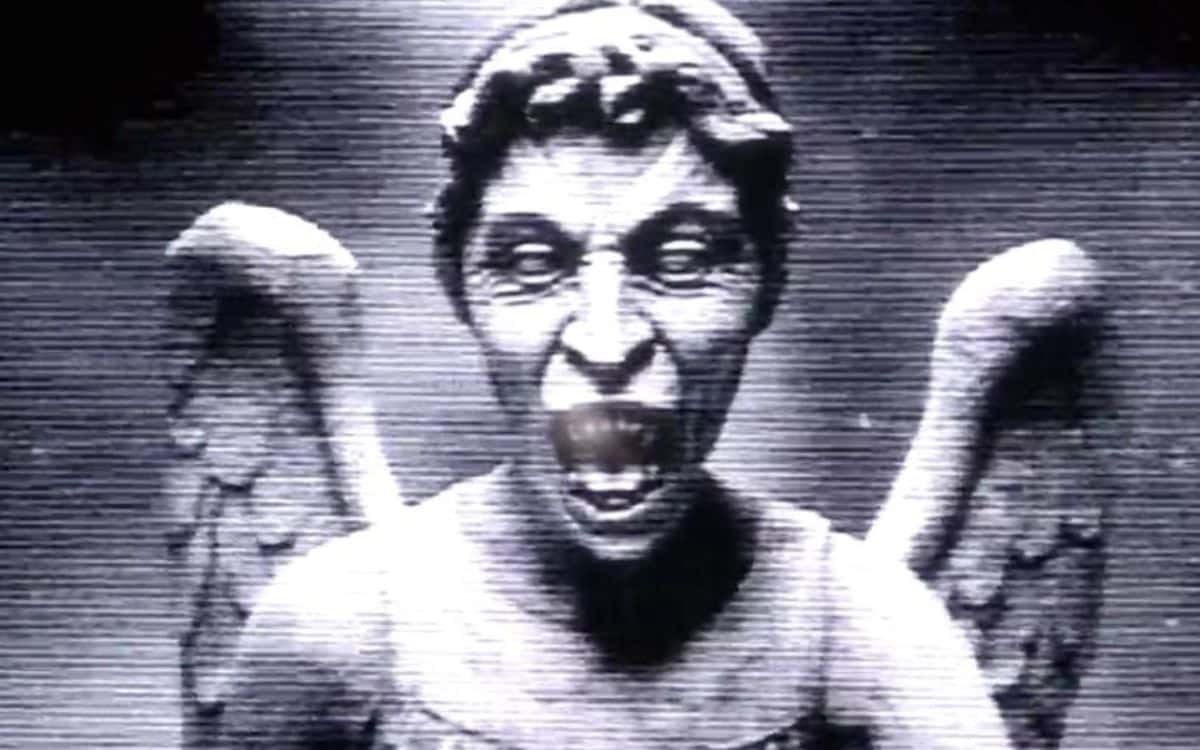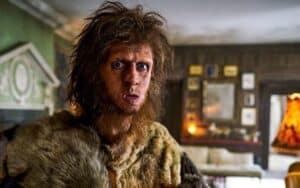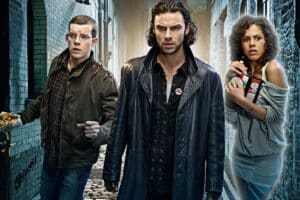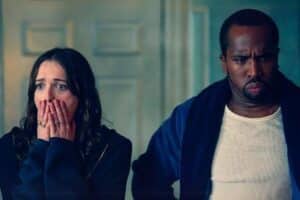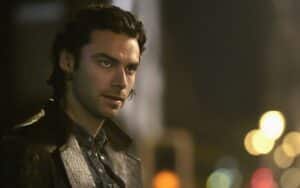As Doctor Who celebrates its 60th anniversary today, DAVID TURNBULL looks at how the iconic sci-fi show has used monsters and other Whovarian horrors to terrify us in its classic episodes
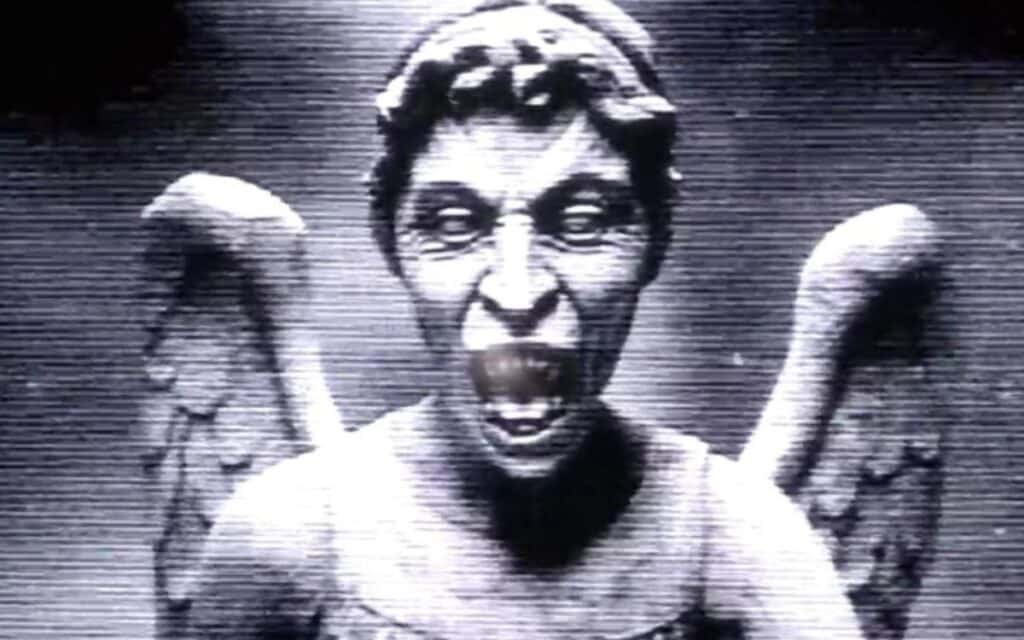
Doctor Who, the longest-running sci-fi show on television, will mark its 60th anniversary this month on 23 November. Famed for sending kids fleeing to the back of the sofa and cowering at the sight of Daleks, Cybermen, and the Yeti, it also boasted a dedicated exhibition called Behind the Sofa at the Museum of the Moving Image on London’s Southbank in the 1990s.
But over its six-decade history, the show has also delved into more traditional horror tropes as well as its core sci-fi elements. This article explores some of those examples.
Back in the William Hartnell era, the first episode of the show, An Unearthly Child, has, in parts, quite a creepy, old black-and-white horror movie atmosphere. It opens with a police officer investigating the dark, moonlit interior of a junkyard at 76 Totters Lane. As he shines his torch over shadowy objects, the camera zooms in on a strange-looking police telephone box, with a blue light ominously flashing on its roof.
Later in the episode, Barbara (Jacqueline Hill) and Ian (William Russell), teachers at the school attended by the Doctor’s granddaughter, Susan, come to investigate the yard, which matches the address where she claims to be living.
Again, the camera techniques and eerie musical score are akin to those used in horror movies and are utilised to create an atmosphere of foreboding and tension.
The first episode of the second serialised story, which introduces the Daleks, has the Tardis materialising in a forest petrified by a thermo-nuclear war on the planet Skaro and has a very gothic, deep, dark wood to it.
Whovian Monsters on Doctor Who
Vampires
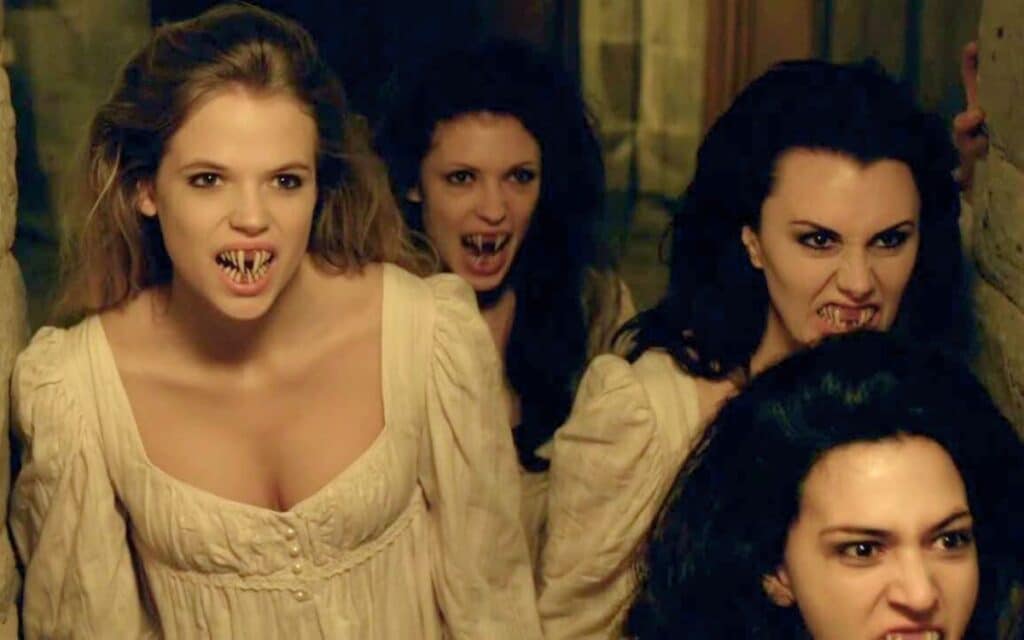
Vampires have turned up on a number of occasions in Doctor Who.
Dracula, The Prince of Darkness, appeared in The Chase, another William Hartnell-era Dalek storyline, alongside Frankenstein’s monster and the ghostly grey lady. All three are androids who inhabit Frankenstein’s House of Horrors, an exhibit at the fictionalised Festival of Ghana.
Pursued through time by the Daleks, the Tardis materialises in the House of Horrors, where the classic monsters prove to be formidable opponents to the Daleks, allowing the Doctor and his companions to escape to yet another time period.
In State of Decay, a Tom Baker-era storyline, a village deliberately kept in an underdeveloped condition is ruled over by three vampire lords who reside in a dark tower that was once their spaceship, The Hydrax. They plan to revive their leader, The Great One. A plan that will involve the sacrifice of the Doctor’s Timelord companion, Romana. In a nod to the wooden stake, these particular vampires can only be killed by means of a steel bolt fired into their hearts.
Matt Smith’s Doctor, along with companions Amy Pond and Rory Williams, encounters a blood-sucking coven in Vampires of Venice. Set in a city sealed off as a consequence of the Black Death, the plot features an alien entity transforming women into fanged creatures with an aversion to light and the ability to make their reflections invisible in the mirror.
Werewolves
David Tennant and Billie Piper encounter a werewolf on the Scottish Moors in the 19th Century in the 2006 episode ‘Tooth and Claw’. The story concerns a plot by a group of evil monks to turn the British Empire into the Empire of the Wolf by converting Queen Victoria (Pauline Collins) into a werewolf. The werewolf being used by the monks is an alien species with the grand title Lupine Wavelength Haemovariform. This is the episode in which Queen Victoria establishes the Torchwood Foundation, named after her fictional Scottish estate, Torchwood.
Werewolves have also turned up a few times in the Big Finish Productions licensed Doctor Who audio plays. These have included ‘Brightly Shone the Moon That Night’, ‘Loups-Garoux’ and the interrelated ‘The Moons of Vulpana’ and ‘An Alien Werewolf in London’. The latter also features vampires.
Ghosts
In the 2006 episode ‘Army of Ghosts’, departed relatives return from the dead. Millions of these spectral ghosts appear across the globe and are accepted by people as their loved ones. They are, however, not ghosts at all, but Cybermen, who have embarked on yet another fiendish plot to conquer the Earth.
In ‘Under the Lake’ (2015), Peter Capaldi’s Doctor, with companion Clara Oswald (Jenna Louise Coleman), investigates a haunted underwater mining facility where the crew is plagued by encounters with murderous hollow-eyed ghosts.
In the 2013 episode ‘Hide’, Matt Smith and Jenna Louise Coleman visit a haunted 1970s mansion owned by Dougray Scott’s Professor Alec Palmer. The professor’s assistant is an empath who can summon the ghost. In this episode, there is both an extraterrestrial and time-travel explanation for the haunting and ghostly sightings.
Spiders
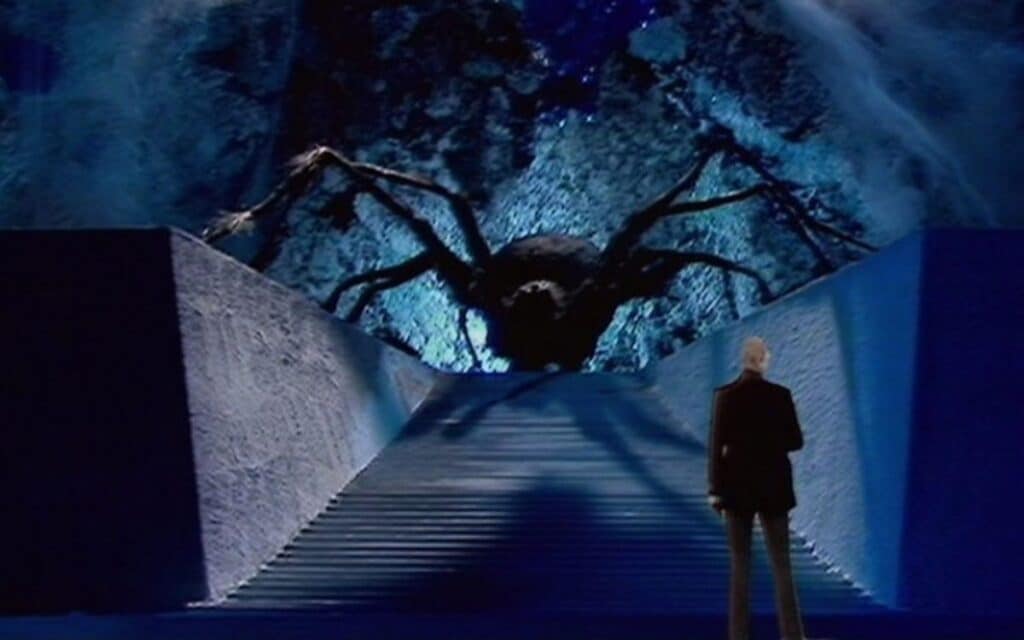
Spiders turn up endlessly in horror novels and movies. Doctor Who is no exception.
‘Planet of the Spiders’, Jon Pertwee’s last Doctor Who serial, has a distinctly Dennis Wheatley/Hammer Horror satanic cult feel to it. Set in a Tibetan monastery in the English countryside, giant spiders from the planet Metebilis Three can be summoned by means of the repetitive chanting of ancient incantation.
Giant spiders of another kind turn up in the 2018 Jodie Whittaker episode. ‘Arachnids in the UK’. Set in Sheffield, the story uses the well-worn trope of toxic waste mutating normal-sized spiders into huge monstrosities to great effect.
There’s also a giant spider (the animus), along with giant ants and flying humanoid moth creatures, in The Web Planet (1965). The ambitious plot, however, is somewhat let down by cardboard sets and some rather dodgy-looking costumes.
Childhood
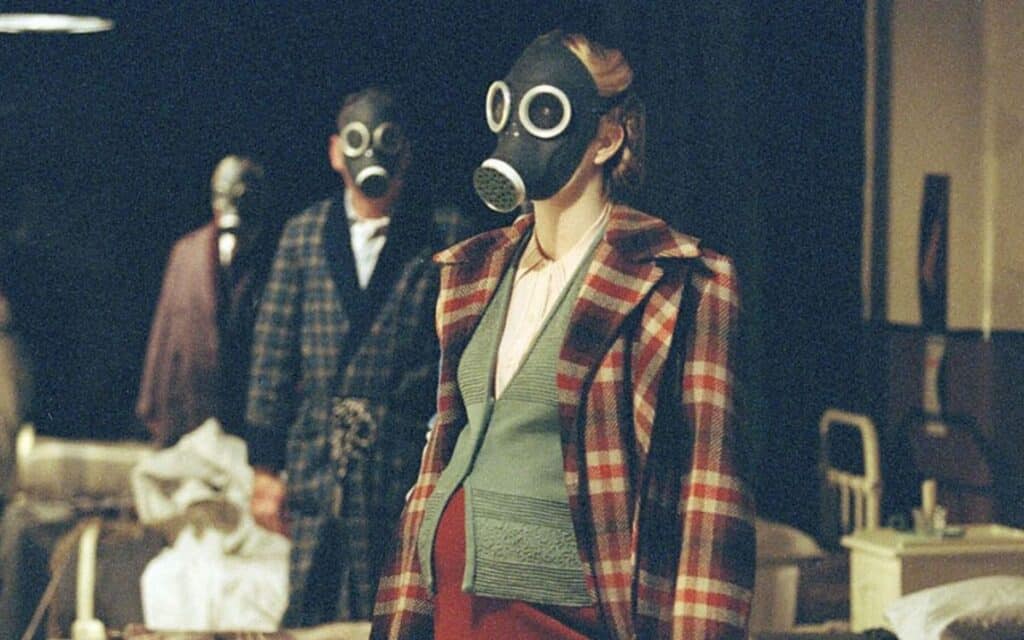
Childhood horror scenarios are visited in three stories.
In Night Terrors, written by Mark Gatiss, Matt Smith’s companions Amy and Rory find themselves trapped inside a life-sized doll’s house, where they are terrorised by an extended family of animated peg dolls. The plot was apparently inspired by Gatiss’s childhood fear of dolls.
‘The Empty Child’ (2005) is set in World War II and marks the first appearance of John Barrowman’s Captain Jack Harkness. It features a child whose features are obscured by a gas mask fused to his face and who creepily asks anyone he encounters if they are his mummy. Soon he has an army of gas-masked cohorts, all endlessly joining in the haunting refrain, ‘Are you my mummy? Are you my mummy?’
‘Remembrance of the Daleks’ with Sylvester McCoy has a creepy schoolgirl who is under the direct control of the Daleks and whose malevolent appearances are accompanied by a melancholy, off-key rendition of a well-known nursery tune.
Zombies
The 2017 episode ‘Oxygen’ Peter Capaldi, along with companions Bill Potts (Pearl Mackie) and Nardole (Matt Lucas), find themselves on a space station infested with a shuffling horde of the walking dead. Oxygen is running out, and it is a race against time to defeat the zombies before being suffocated and rendered unconscious.
‘The Curse of Fenric’ broadcast in November 1989 takes the Doctor (Sylvester McCoy) and companion Ace (Sophie Aldred) back to World War II, where hybrid zombie vampires known as the Haemovores have laid siege to a naval base.
New Horrors
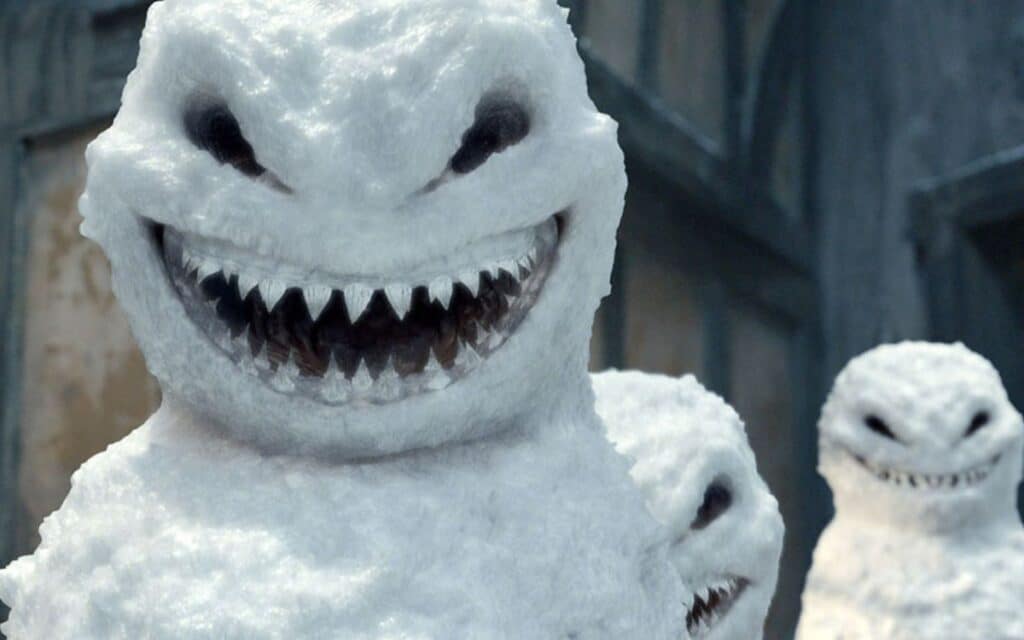
Since its relaunch in 2005, the series has introduced several new monsters clearly based on horror tropes. In ‘The Family of Blood’ (2007), David Tennant and Frema Agyeman have to battle an army of animated scarecrows, and the Beast in ‘The Satan Pit’ (2006) reveals the origins of Satan and the Devil in human mythology. The show has even managed to turn snowmen into horrific monsters in the 2012 Christmas special ‘The Snowmen’.
But it is the Weeping Angels that stand out as the truly horrific creation of the 21st-century Doctor Who series. Making their first appearance in ‘Blink’ (2007), these fang-toothed creatures, with grotesquely contorted features, give the outward appearance of stone statues, but if you close your eyes, or so much as blink, they will move with surprising speed and be on you in an instant.
Having clocked up five of their own episodes, six other appearances, three audio episodes, and four novels, the Angels are fast catching up with the Daleks and the Cybermen as the show’s most often repeated monsters.
We are now about to see the new series in which David Tennant, reprising his role for a short run, will be pitted against The Celestial Toymaker, a character who first appeared in 1966. Its storyline of the Doctor and his companions being forced to take part in a series of games and tasks with dire consequences for the losers predates the Saw horror franchise, as well as streaming TV series such as Squid Games and Alice in Borderland, all based on a similar premise.
Whovian horrors galore, and once Ncuti Gatwa steps into the Tardis as the 14th regeneration of the Doctor, it will be interesting to see which new horror tropes will have us all fleeing to cower at the back of the sofa.
Tell us your favourite Whovian horrors in the comments section below!

